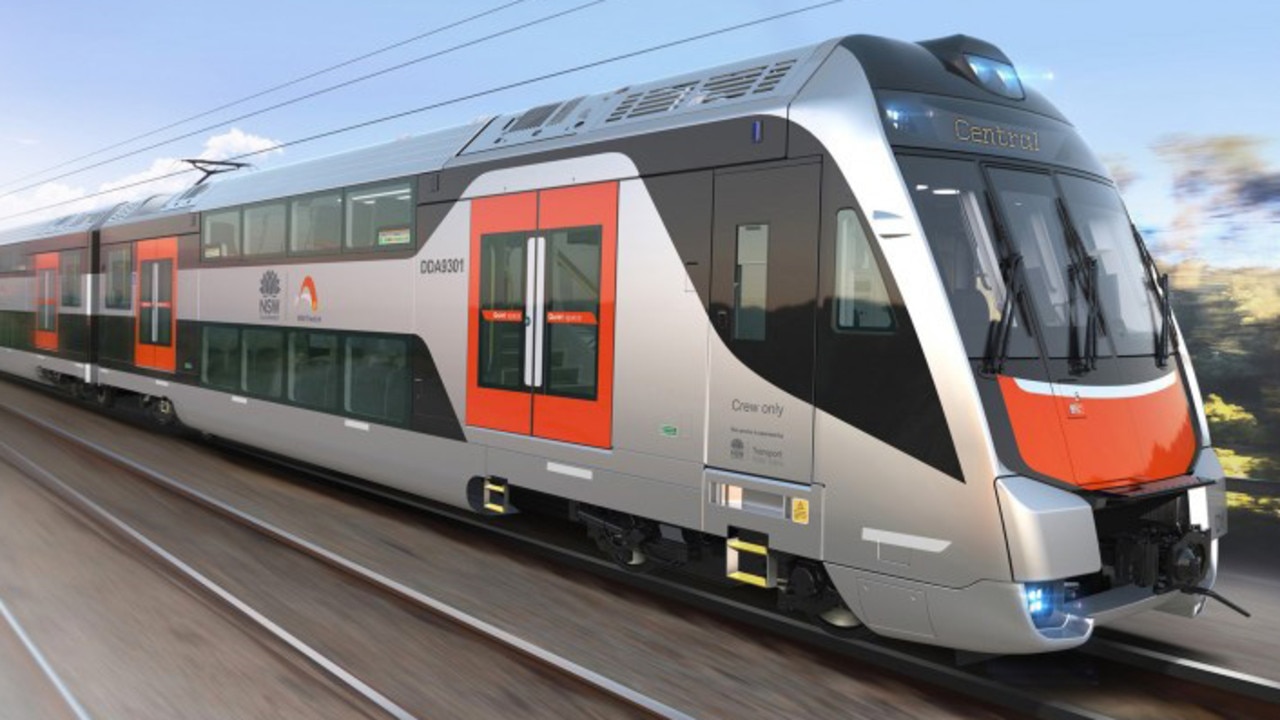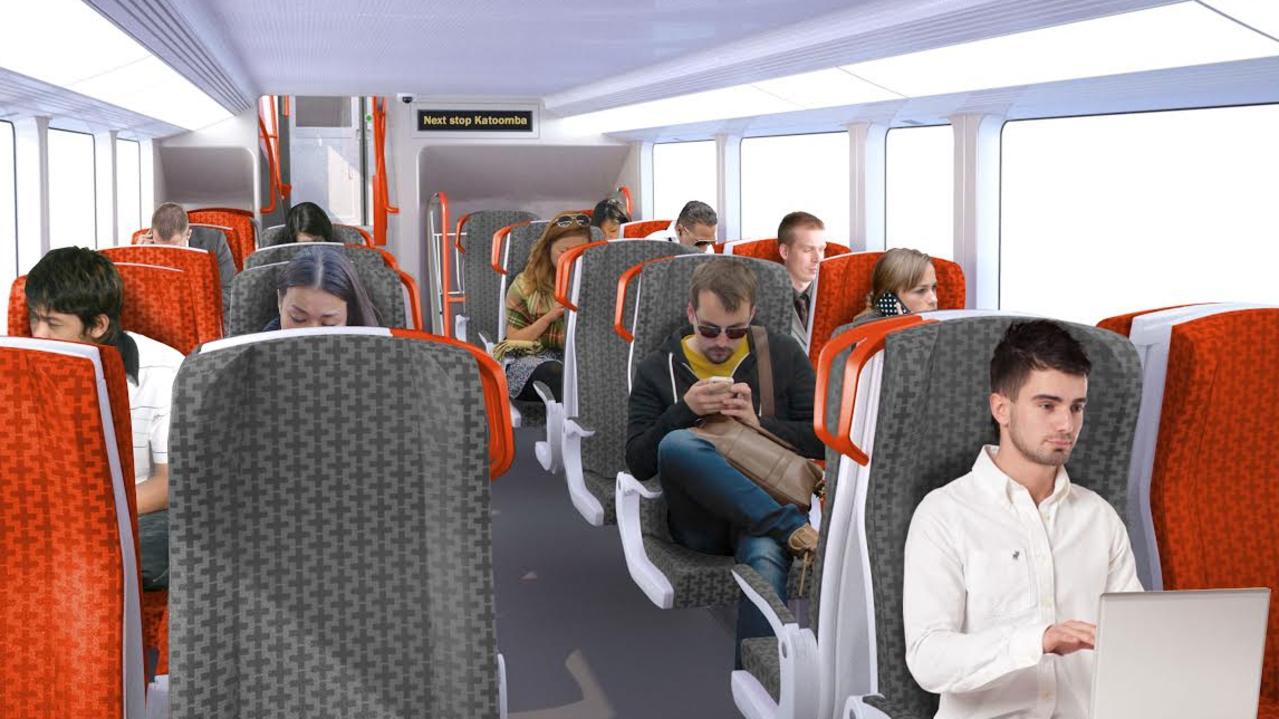Rail, tram and bus Union says NSW’s new Intercity trains are ‘lemons’ and pose a risk to passengers
A $2.3bn batch of new trains has been slammed as “danger on wheels” due to major “design flaws”. The Government has hit back, saying the opposite is the case.
A trade union representing train guards has said new NSW trains, which cost more than $2 billion, are “unsafe” due to a “design flaw” and could pose a risk to passengers.
The Rail, Tram and Bus Union (RTBU) claims the Korean built trains are a “danger on wheels” that demonstrate the Government can’t manage transport projects.
But the train’s operator maintains safety is its top priority and a review has found the trains had more advanced safety systems than many other trains around the world.
The fleet has already proved controversial when it was revealed they were wider than the trains they will replace and could scrape tunnel walls.
Costing $2.3bn, the so-called “New Intercity Fleet” will transport passengers on regional routes from Sydney to Newcastle, the Central Coast, Wollongong and the Blue Mountains.
The NSW Government has committed to purchasing 554 carriages which are being built by Hyundai in Korea. The trains will include accessible toilets, space for bikes and luggage and at-seat charging points. The first carriages are due to enter service next year.
But RTBU NSW Secretary Alex Claassens said passengers will be put at risk.
“The people on the ground – the train guards, drivers and station staff – know that these trains aren’t safe.
“Real experts who work on our trains every single day have travelled to South Korea and seen these New Intercity Fleet trains first-hand. They know that the current design flaw puts commuters at risk because it doesn’t allow train guards to properly monitor people in the moments before the train departs,” he added.

The issue is a change in the way guards will operate. Train guards physically peer out from their cabs to check the train is safe to depart but when the new fleet launches guards will check a bank of CCTV monitors inside their cabs.
“They’re (now) able to listen to people yelling, if they’re running late for the train.
“By being cooped up inside the train they’re not going to hear any of that,” Mr Claassens told the ABC today.
Mr Claassens’ comments come after a report commissioned by Transport for NSW (TfNSW) gave the new trains the safety tick.
Pete Allaway, Acting Chief Executive of NSW TrainLink which will operate the fleet, said the “expert safety review” looked at how safe the trains would be with the changed way guards will do their jobs.
“The technical systems used by the New Intercity Fleet are more advanced than many systems currently in use internationally.
“These systems give the train driver and the customer-service guard a comprehensive
view of the complete train length to monitor the platform as customers board and alight.”
Mr Allaway said the review has “identified some recommendations” which were being “progressed in readiness for operation of the fleet”.
He said the guard’s role would change even further on the new trains and, in future, they would move up and down the carriages providing travel information and giving assistance to passengers.
“The safety of our staff and customers is always our first priority. To have this expert review confirm for us that we have created a safe, world-class operating model is excellent news,” Mr Allaway said.

The RTBU’s Mr Claassens said there were “grave concerns” about the independence of the review.
“The government can commission favourable reports all it likes – the fact is that if these trains are allowed on the track in their current form, passengers and workers will be put at risk.”
TOO BIG FOR TUNNELS
Last year, it emerged the new trains were too big for some of the tunnels they would travel through.
Whereas the current trains are 2.9m wide, the new models are 20cm wider. That small difference means they could collide with the tunnel walls on their way up to the world famous Blue Mountains.
To overcome this problem, TfNSW will widen 10 tunnels.
In a Review of Environmental Factors report, TfNSW said widening all of the tunnels and realigning the track was prohibitively expensive but doing nothing was also not an option.
Instead, they recommended a “sub-medium electric standard” which will essentially see the current regulations watered down so the wider trains can operate.
In addition, the tunnels would also be “notched” in places. This involves gouging a chunk out of the existing tunnel where the clearance is narrowest to allow the new trains the pass through.
At the time TfNSW said it “always knew” work would be necessary on the tunnels when new trains were introduced.




